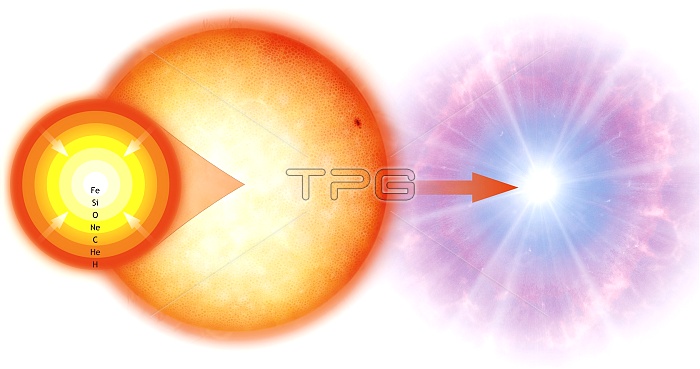
Supergiant star's core goes supernova, artwork. When a supergiant star (10-70 solar masses) uses up the hydrogen at its core, the nuclear fusion processes start to produce successively heavier elements that form shells of 'ash' that accumulate at the centre of the star. These shells are shown at left, labelled by their chemical symbols (H - hydrogen; He - helium; C - carbon; Ne - neon; O - oxygen; Si - silicon; and Fe - iron). The nuclear fusion reactions to produce iron, unlike the other reactions, do not produce enough energy to prevent the core collapsing (arrows). A rebounding shock wave blows off the star's outer layers (right) at thousands of kilometres per second, distributing the heavy elements to form planets and life. A supernova may briefly outshine an entire galaxy.
| px | px | dpi | = | cm | x | cm | = | MB |
Details
Creative#:
TOP10240658
Source:
達志影像
Authorization Type:
RM
Release Information:
須由TPG 完整授權
Model Release:
N/A
Property Release:
N/A
Right to Privacy:
No
Same folder images:

 Loading
Loading